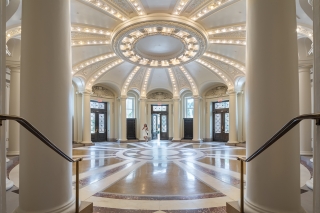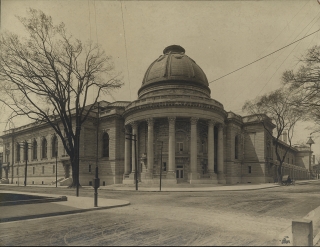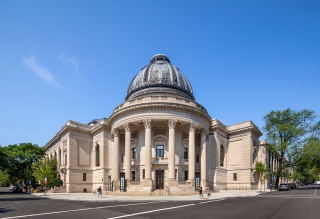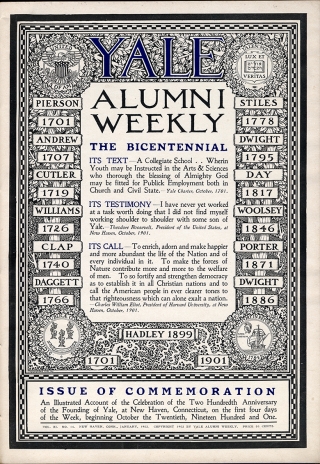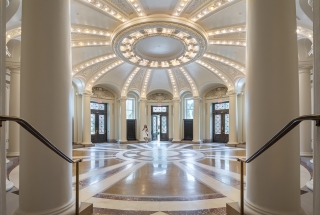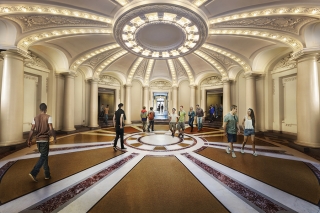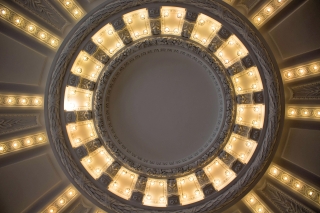To commemorate Yale’s Bicentennial in 1901, three buildings were erected: University Commons, Memorial Hall, and Woolsey Hall. Of those original structures, Yale Schwarzman Center (YSC) today encompasses Commons and three floors of Memorial Hall (now known as The Well, Presidents’ Room, and The Dome). The Rotunda, formally a part of Memorial Hall, is a shared entryway to YSC and Woolsey Hall on the street level. And it is best known for its engraved remembrances of Yale alums who died in wars throughout U.S. history. Almost every Yale student has passed through the Rotunda en route from Prospect Street to Beinecke Plaza and back again. Renovations to YSC enabled lighting and flooring improvements in this beloved and well-traveled space.
The names of the fallen did not go up simultaneously with the original construction. The engravings began with the Civil War Memorial, dedicated in 1915, fifty years after Robert E. Lee surrendered his Confederate troops to General Ulysses S. Grant in the 1865 Battle of Appomattox Courthouse. Yale’s Civil War Memorial was, however, not the first of its kind. Brown University and Harvard University had dedicated their memorials in 1866 and 1875, respectively. Yale had considered a designing a memorial as early as 1865 but acted much later. By then the popular consensus around the war had shifted to a desire to move forward and heal as one country, influencing in a novel feature in Yale’s Civil War Memorial: both Union and Confederate names are etched into the walls.
Over time, the engraving tradition continued, with names of fallen soldiers from other wars joining the names of those who died in the Civil War. Featured now, additionally, are names from the American Revolutionary War, the War of 1812, the Spanish-American War, China’s Boxer Rebellion, World War I, World War II, the Korean War, and the Vietnam War. Maya Lin ’81 ARC ’86 attended Yale when the names of Vietnam veterans were being inscribed. Moved by what she referred to as “the sense of the power of a name,” Lin entered and won the Vietnam Veterans Memorial design competition as an undergraduate, linking the U.S. national memorial to Lin’s experience in the Rotunda.
In the evenings, when pedestrian traffic settles, you might find musicians in the Rotunda entertaining souls present—and souls dearly departed—with an impromptu concert. But the Rotunda is so much more than just a passthrough or makeshift music venue. It’s a place between worlds at the intersection of life, the arts, and worlds beyond
